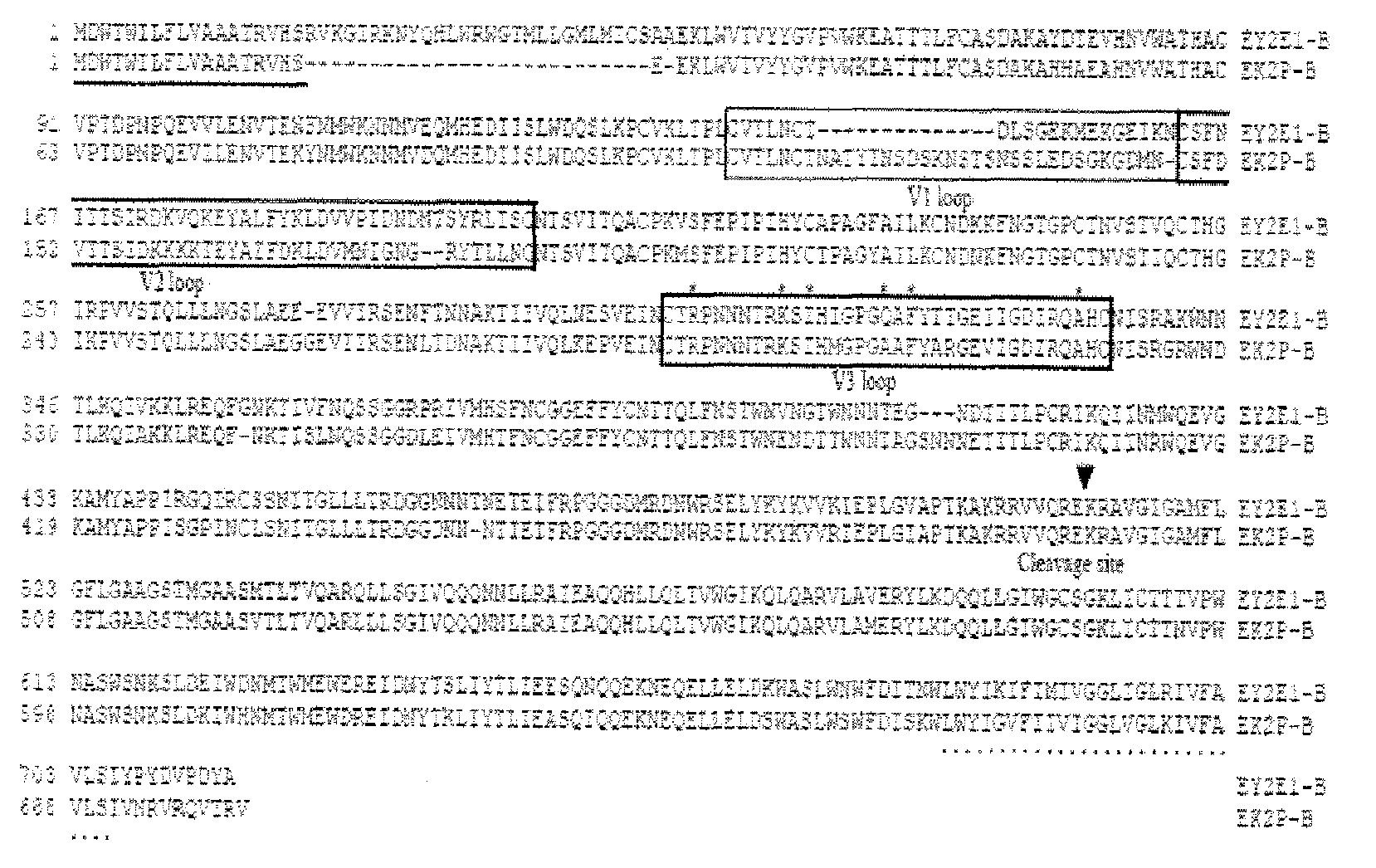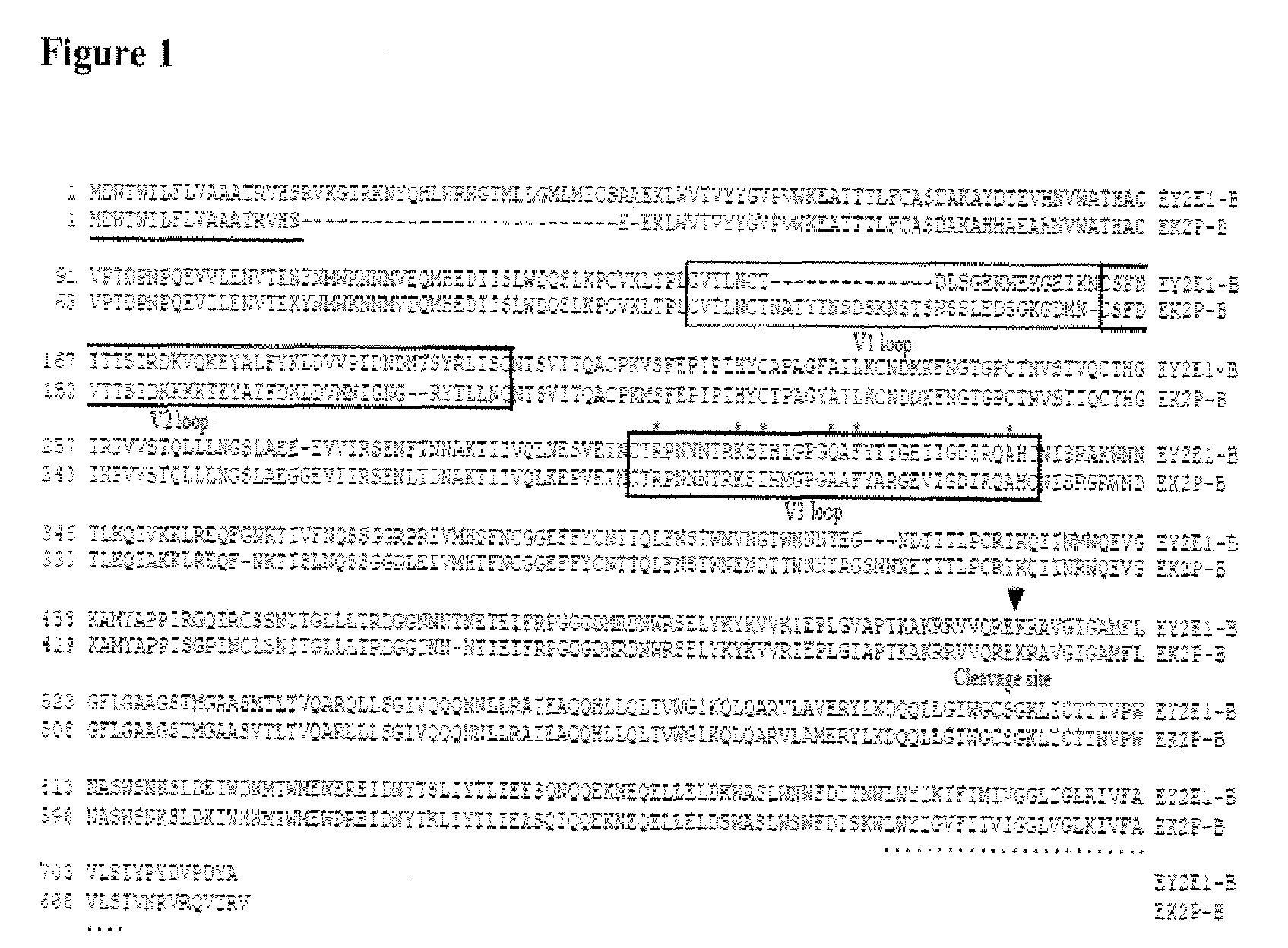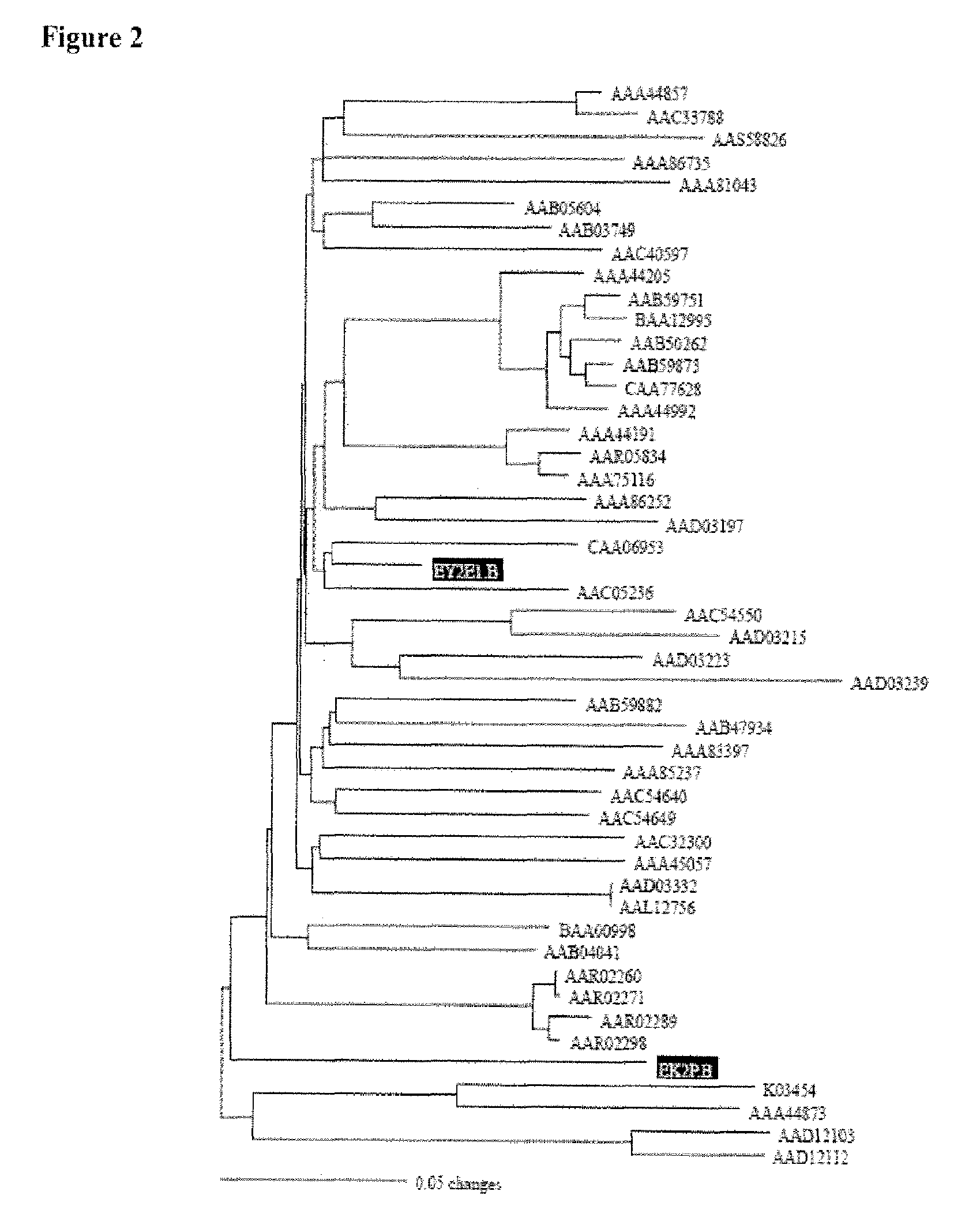Vaccines and methods for using the same
a technology of immunogens and vaccines, applied in the field of improved hiv, hpv, hcv, influenza and cancer vaccines, can solve the problems of relatively modest cellular immune enhancement induced by these immunogens, and the study of individual isolates derived from these approaches does not show sufficient cross reactivity to protect against diverse circulating hiv viruses. to achieve the effect of improving immunogenic targets
- Summary
- Abstract
- Description
- Claims
- Application Information
AI Technical Summary
Benefits of technology
Problems solved by technology
Method used
Image
Examples
example 1
Materials and Methods
[0193]HIV-1 subtype B envelope sequences. To generate HIV-1 subtype B consensus envelope sequence, forty-two subtype B envelope gene sequences collected from eleven countries were selected from GenBank to avoid sampling bias. Each sequence represents a different patient. All sequences used are non-recombinant.
[0194]Multiple alignment. The alignment procedure applied in the phylogenetic study included the application of Clustal X (version 1.81) (Thompson, J. D., et al. 1997. The ClustalX windows interface: flexible strategies for multiple sequence alignment aided by quality analysis tools. Nucleic Acids Research 25:4876-4882). Pairwise alignment parameters were set to the dynamic “slow-accurate” programming, using 10 as the gap opening penalty and 0.1 as the gap extension penalty. Multiple alignment parameters included a gap extension penalty equal to 0.2.
[0195]Construction of HIV-1 subtype B envelope consensus sequence. The HIV-1 subtype B envelope consensus nuc...
example 2
Development of a Novel Engineered HIV-1 Clade C Envelope DNA Vaccine that Enhances Diversity and Breadth of the Elicited Cellular Immune Response
[0229]Strong HIV-1 specific CTL responses have an important role in managing viral load during acute and asymptomatic infection. However, recent studies on consensus immunogens have not been able to noticeably demonstrate improved cellular immune responses. Here we test a novel engineered Clade C consensus-based envelope immunogen for improved cellular immune response. The novel vaccine (pEY3E1-C) was created from the HIV-1 Clade C consensus envelope sequence. Several modifications were performed including shortening the highly variable V1 and V2 regions based on early transmitter sequence, retention of the V3 loop for CCR5 utilization, removal of the cytoplasmic tail region from the C-terminus to prevent envelope recycling, and retention of the cleavage site and TMD for proper folding. Also, an IgE leader sequence was added to the N-termin...
example 3
Efficacy of a Novel Engineered HPV-16 DNA Vaccine Encoding a E6 / E7 Fusion Protein
[0247]The immunogen has been designed to be expressed as a polyprotein whereby E6 and E7 sequences are separated by a proteolytic cleavage site. The polyprotein is also expressed with an IgE leader sequence. The polyprotein design includes deletions or mutations in the E6 sequence which are important for p53 binding and degradation and mutations in Rb binding site on the E7 protein. FIG. 23 provides an illustration of the immunogen design.
[0248]Coding sequences encoding the polyprotein were inserted into the vector pVAX to produce plasmid p1667 FIG. 24 shows maps of pVax and p1667.
[0249]TC1 tumor cells were immortalized with HPV-16 E7 and transformed with the c-Ha-ras oncogene. These cells express low levels of E7 and are very tumorigenic.
[0250]In the immunogenicity study in mice, 3 mice / per group of C57BL6 mice were administered 100 μg DNA / per mouse. Groups included 1) control which were administered p...
PUM
| Property | Measurement | Unit |
|---|---|---|
| thermal melting point | aaaaa | aaaaa |
| temperature | aaaaa | aaaaa |
| temperature | aaaaa | aaaaa |
Abstract
Description
Claims
Application Information
 Login to View More
Login to View More - R&D
- Intellectual Property
- Life Sciences
- Materials
- Tech Scout
- Unparalleled Data Quality
- Higher Quality Content
- 60% Fewer Hallucinations
Browse by: Latest US Patents, China's latest patents, Technical Efficacy Thesaurus, Application Domain, Technology Topic, Popular Technical Reports.
© 2025 PatSnap. All rights reserved.Legal|Privacy policy|Modern Slavery Act Transparency Statement|Sitemap|About US| Contact US: help@patsnap.com



